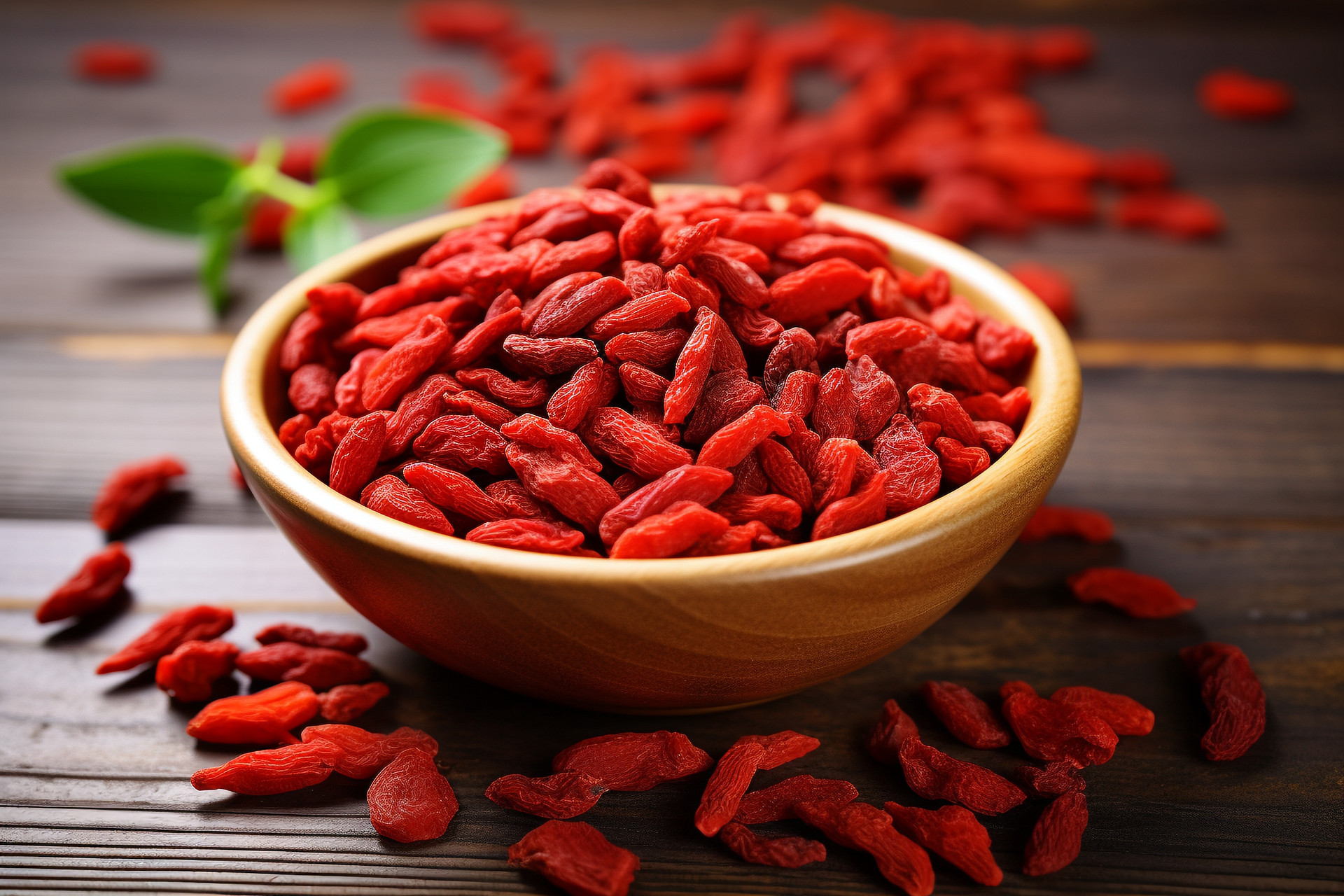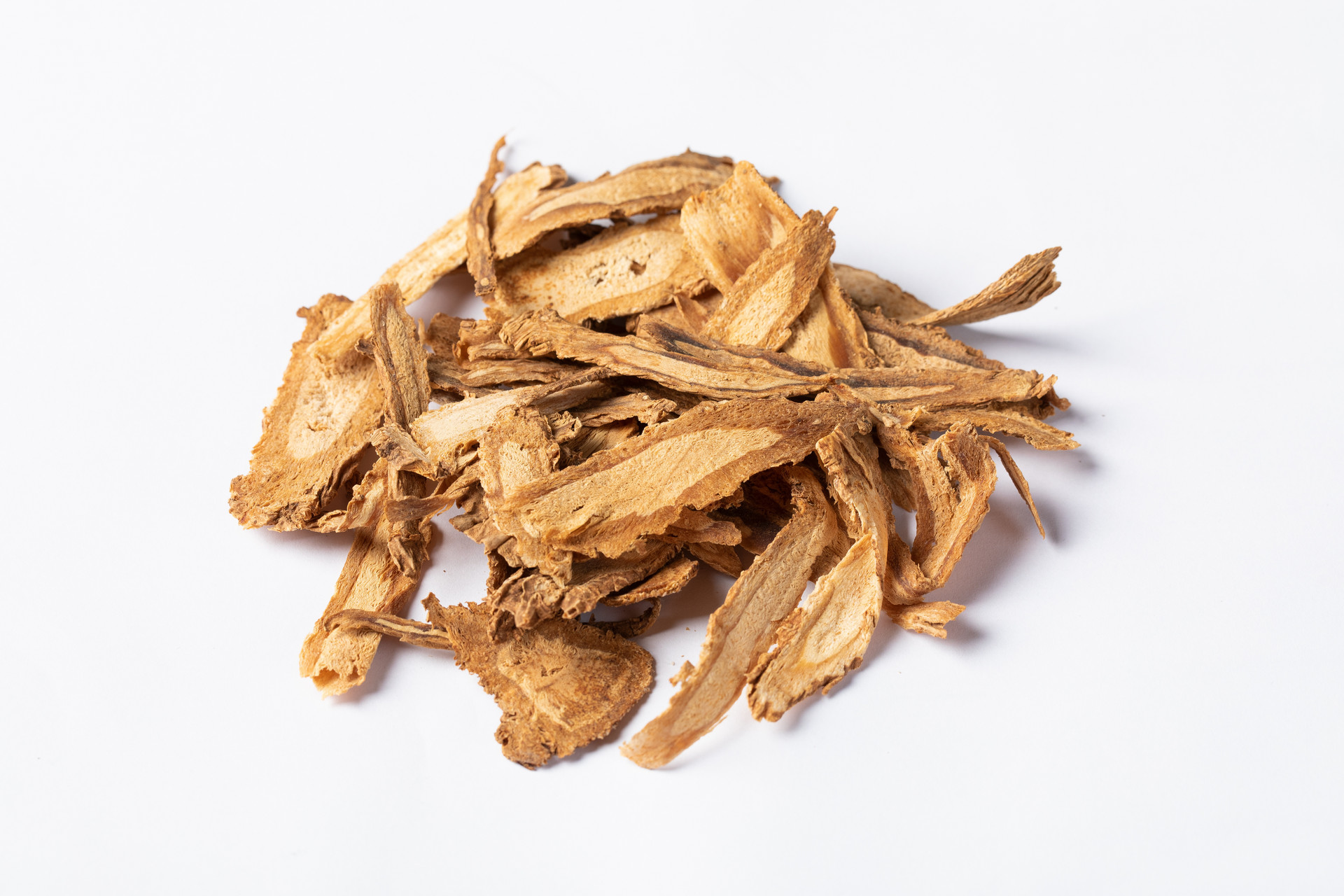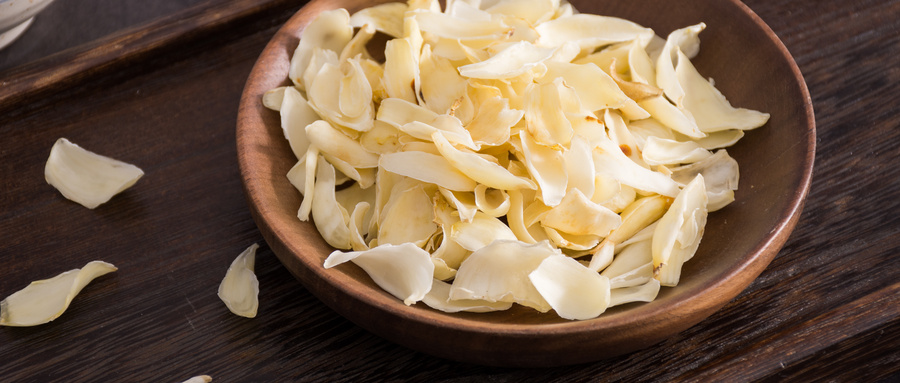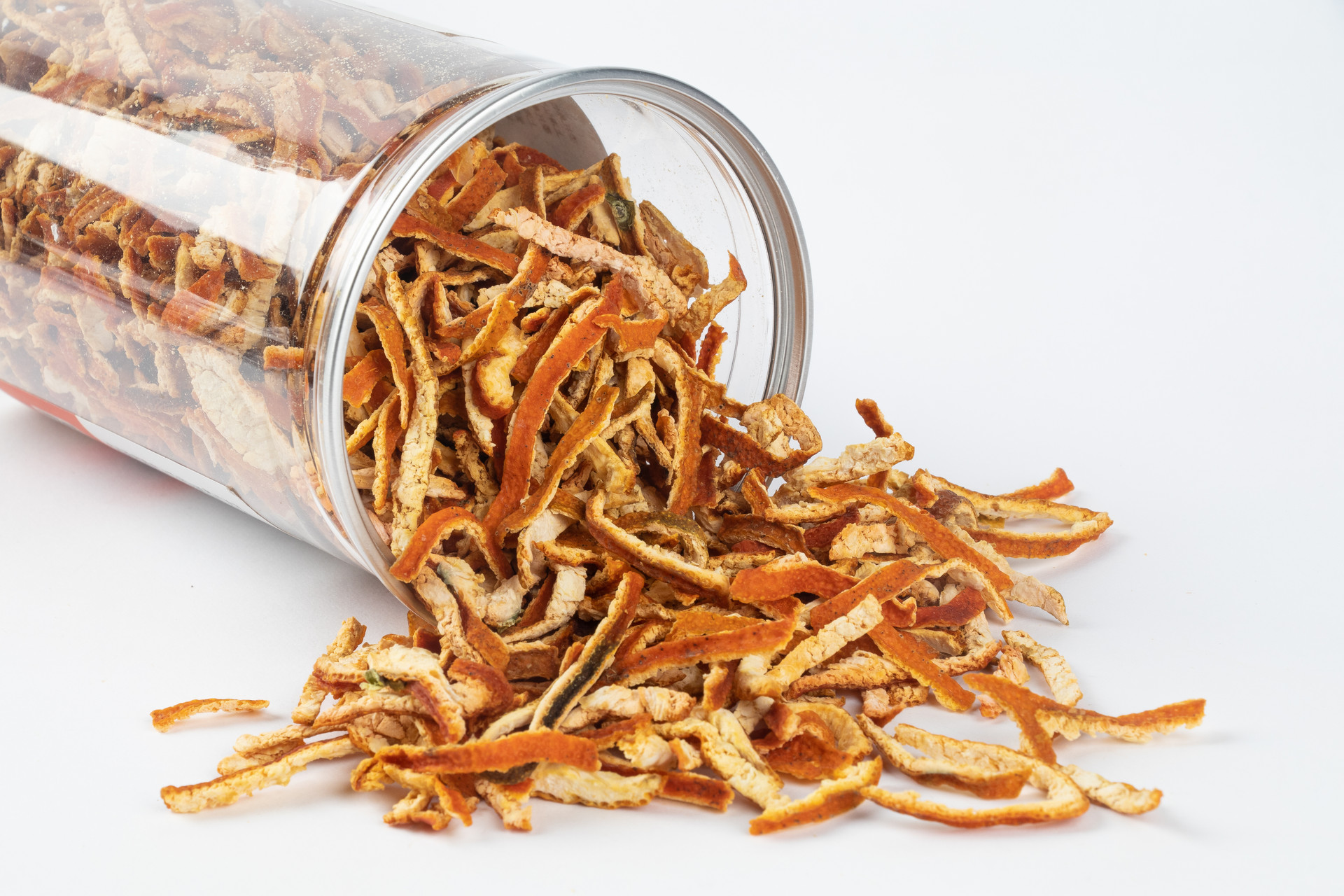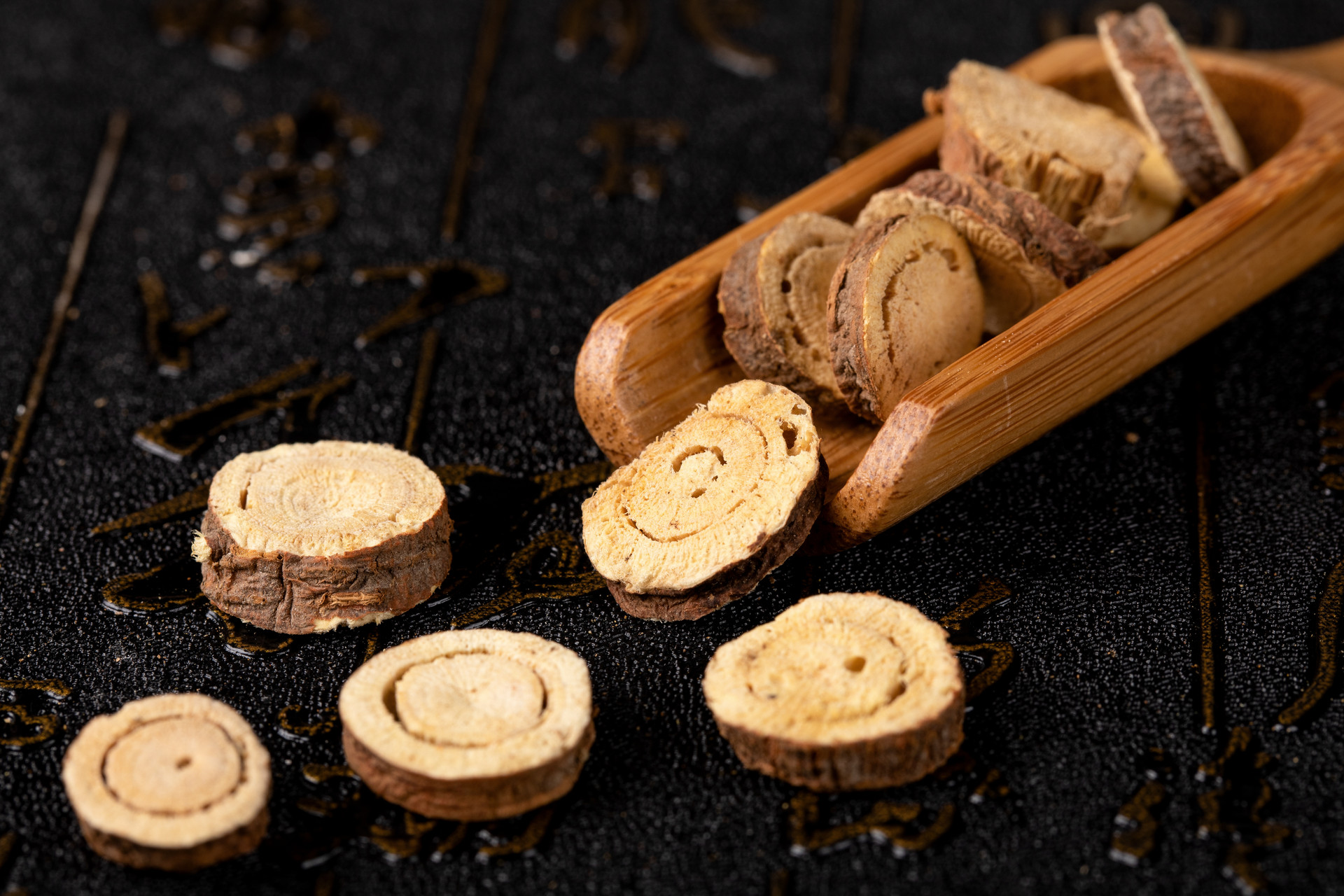Sargentodoxa cuneata (Oliv.) Rehd. et Wils., commonly known as Daxueteng, Xueteng, or Huoxueteng, is a vine stem of the plant in the family Menispermaceae. It is mentioned in the "Fengcao Tu Jing". It is harvested in autumn and winter, with side branches removed, cut into sections, and dried.
[Processing Method] Take the raw herb, remove impurities, wash it thoroughly, slightly soak it, moisten it, cut it into thick slices, and dry it.
[Appearance of prepared slices] It is long elliptical or round, with a reddish-brown surface. The effective part is embedded in the wood, which is yellowish-white, with numerous fine pores and reddish-brown radial lines. The periphery is gray-brown and rough. It is hard in texture. It has a mild aroma and a slightly astringent taste.
[Processing function] Daxueteng has a bitter and slightly cold taste. It enters the large intestine and liver meridians. It has the functions of clearing heat and detoxification, promoting blood circulation, and dispelling wind. Processing makes the herb clean, facilitates the dissolution of medicinal components, and is convenient for formulation and preparation. It is used for intestinal abscess and abdominal pain, dysmenorrhea, rheumatic arthralgia, and bruises and swelling caused by falls. For example, it is used in the treatment of intestinal abscess and abdominal pain in the formula mentioned in the "Jingyue Quan Shu"; it is decocted with Yimucao and Longyacao to treat dysmenorrhea as mentioned in the "Zhejiang Medicinal Plants"; it is decocted with Xianhecao and Maogen to treat bleeding as mentioned in the "Hunan Medicinal Plants".




